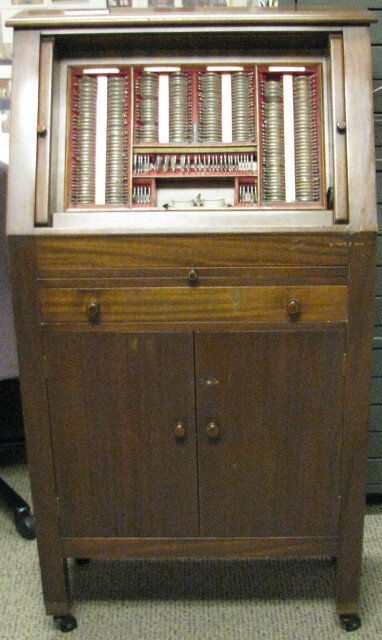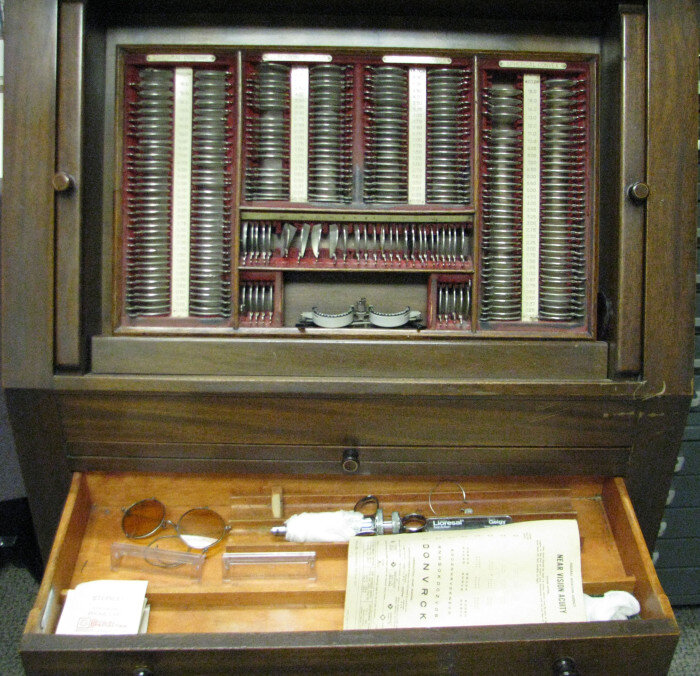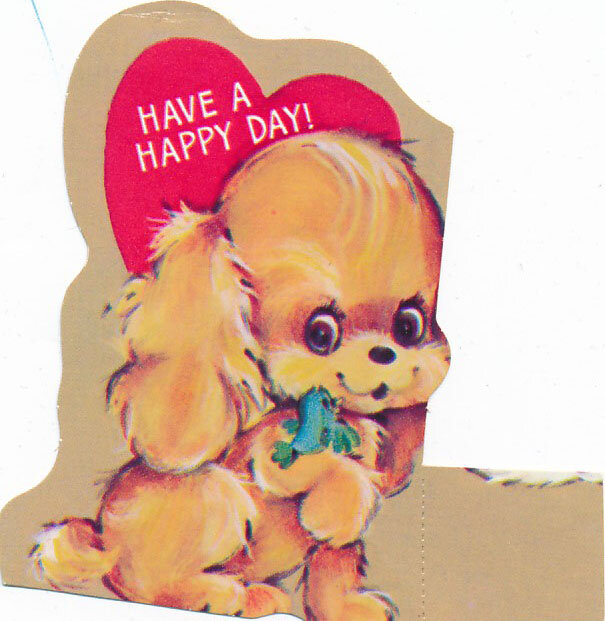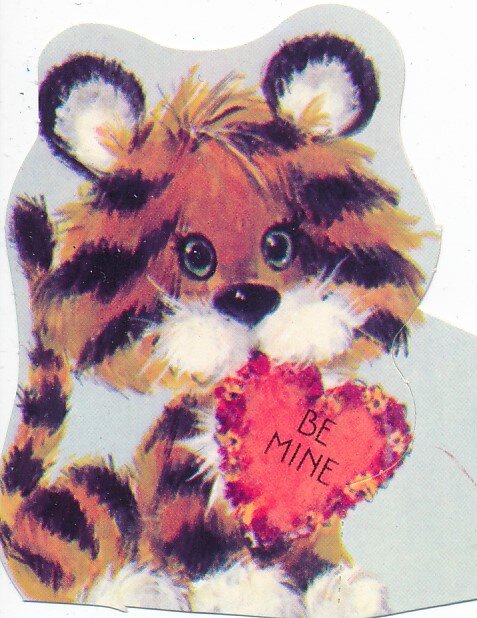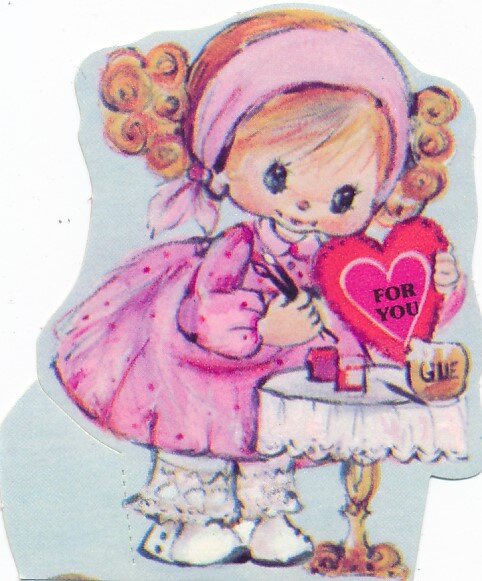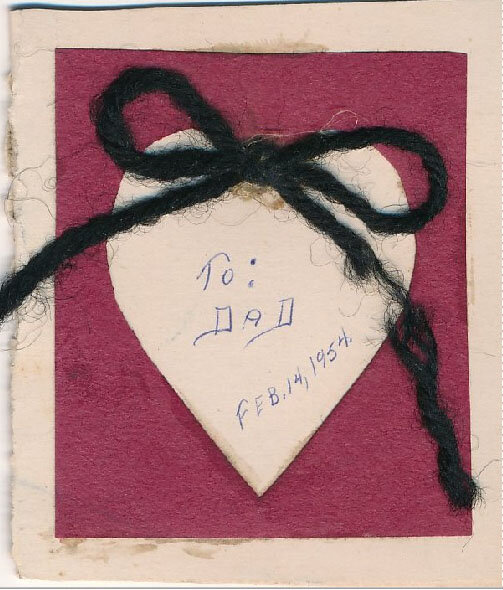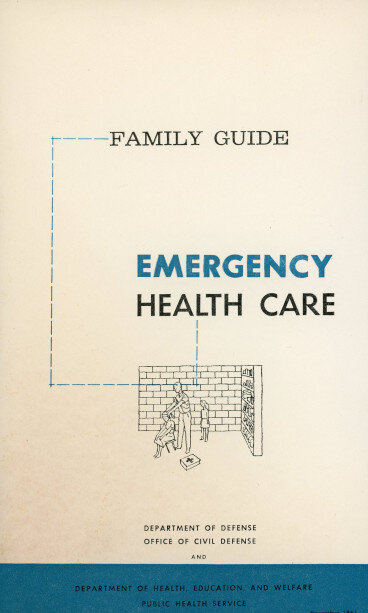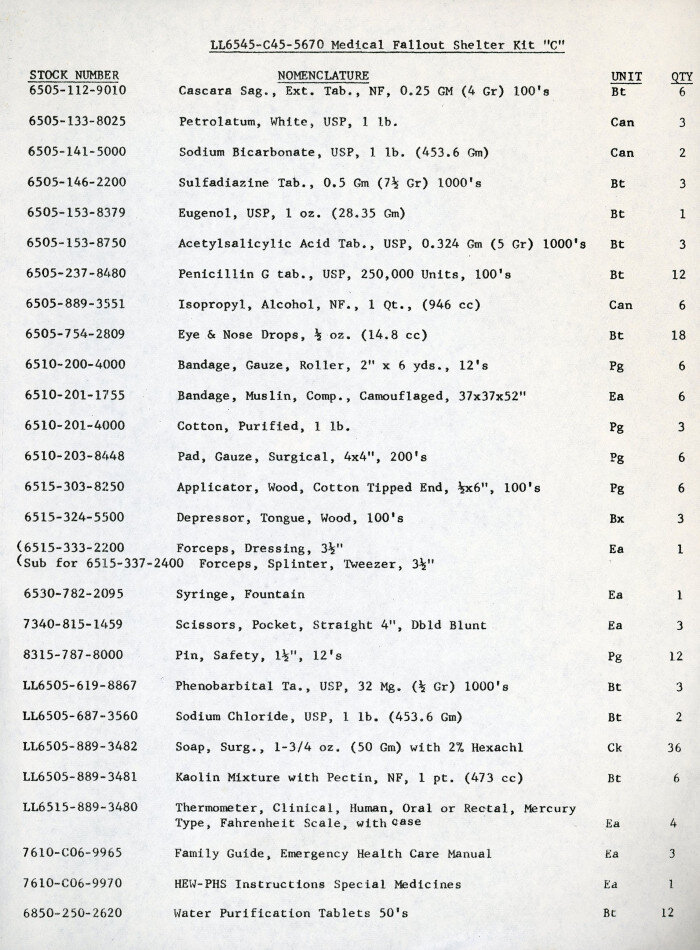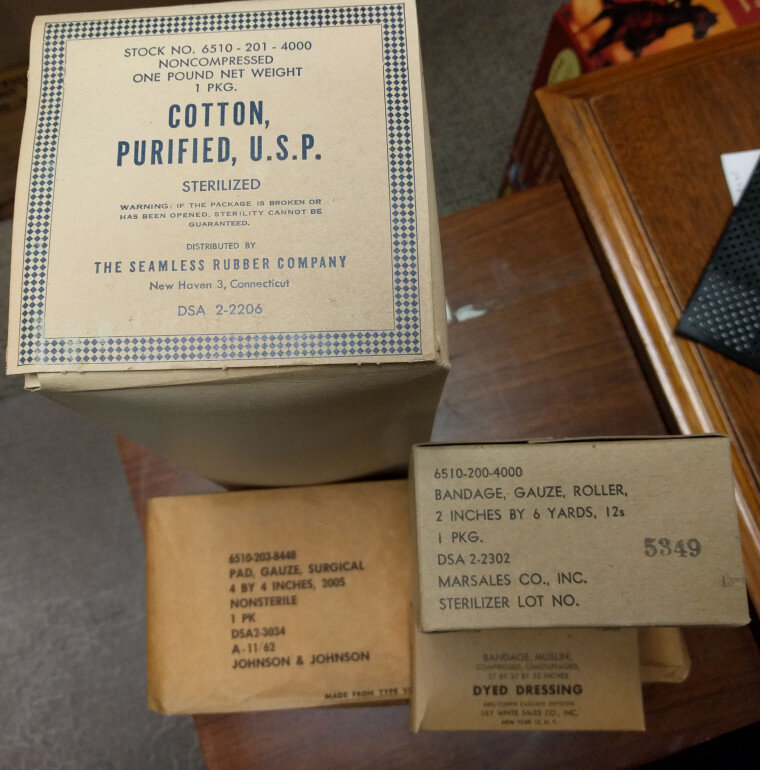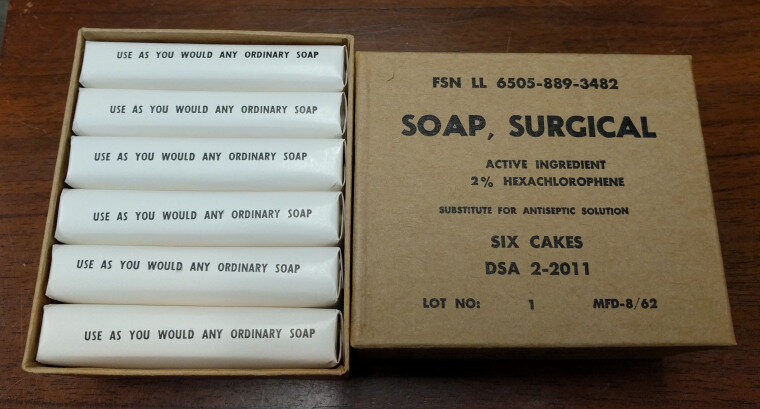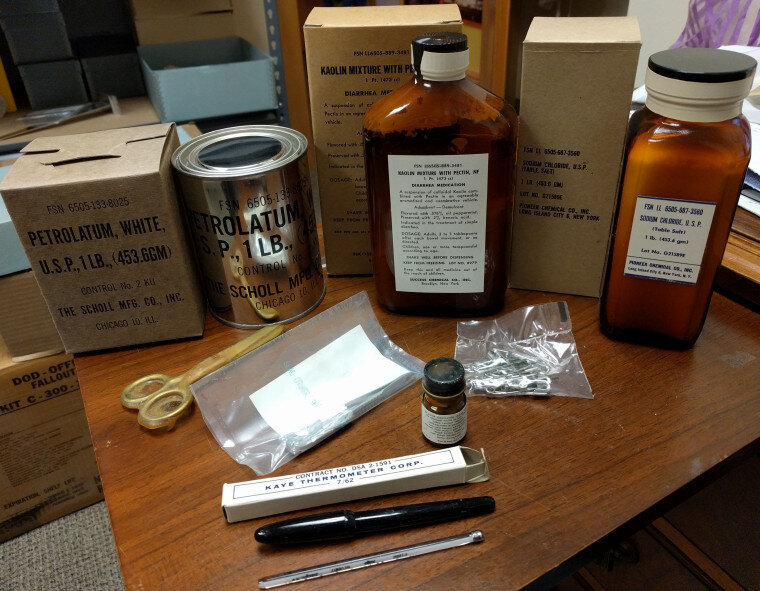A couple of weeks ago the Scott County Historical Society was lucky enough to have donated a unique piece of medical history. Before the days when you could go to a Pearle Vision, you had to have your eyes test the old fashion way, enter the Trial Lens Case. This massive case has been used by a few different doctors throughout the years in Belle Plaine. The case comes with dozens of removable lenses that are placed in a pair of frames to measure what strength of glasses you need.
According to what we could learn, this case was first purchased in 1927 by Dr. Herman Jurgenson, who then gave it to Dr. Roger Hallgren when he retired. The case changed hands many times, even at one point being used as a stand in the doctor’s office. This is a wonderful piece of the past to help show how far we have come in such a small time. Its objects like this that make history fascinating, imagine that less than a century ago this was how you got your glasses measured and fitted. Medicine in all fields has changed so much, it is good sometimes to look back and consider where we have come from. Now if you will excuse me, I need to see if I can find the right lenses for my poor eyes.



